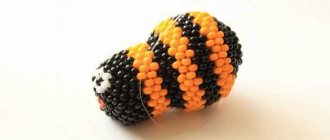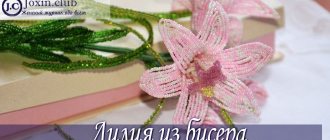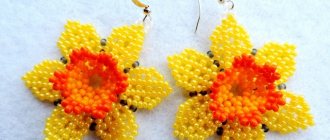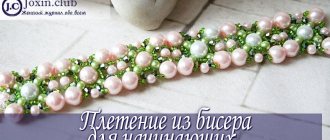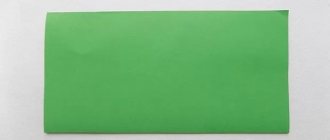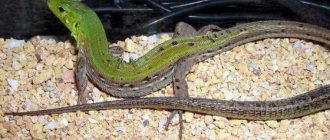Everyone knows that wisteria is very beautiful. It's simple to do, but labor-intensive. The “Do-It-Yourself Wisteria from Beads” master class with step-by-step photos will help you master the popular beading technique quickly and without extra effort.
The tree of happiness can be made from the following materials:
- Lilac, pink, light pink and white beads for flowers;
- Green in two shades for leaves;
- 0.3; 0.4; 1; 3 mm wire;
- PVA glue;
- Alabaster or plaster;
- The paint is brown;
- Foil or bags;
- Brush;
- Stones and beads, shells, etc. (to decorate a pond);
- Light blue gel candle or transparent sealant (for the pond itself);
- A container (you can cut the bottom from a bottle of sparkling water) or take a stand for indoor flowers.
What you need for the craft
Master class of wisteria from beads can be different, but the materials that will be needed for this or that craft are almost identical:
- Green beads for leaves. You can take two shades - light and dark, it will look more beautiful;
- Beads for creating flowers. Usually they take three shades - white, lilac and pink;
- You will also need glossy beads in three colors: pink, yellow and melange;
- Thin green and silver wire;
- The wire is thicker, about 1 millimeter in diameter;
- Brown floss threads;
- Gypsum;
- Glue;
- Acrylic paints;
- If you need decor to complete the craft, you will need it. For example, moss, small stones, grass.
Since trees made from wisteria beads do not require evenness and quality of details, you can take inexpensive Chinese beads, in which all the elements are not identical to each other.
What materials are needed for weaving?
Now you can buy everything you need to make parts. The master class we offer discusses the simplest model for beginners.
- Beads. Our sample uses spherical beads made in China in bags of 25 grams in six shades: two shades of green, three shades of blue and white. The size of the beads is at your discretion. But as experience shows, the smaller the beads, the more elegant and natural the tree looks.
- Wire. For twigs, it is better to take a wire of two diameters: 0.1 mm and 0.3 mm. Thin wire is, of course, more difficult to work with. But it is with it that it is easier to achieve the necessary plasticity when creating the effect of a hanging vine. Color is of fundamental importance. The visual impression of branches of silver or golden color is different - keep this in mind.
- For decoration:
- Gypsum – 0.5 kg. Medical or architectural - there is no fundamental difference, but architectural is much cheaper.
- Painting tape, no more than 3 cm wide.
- Paint for tinting. Acrylic is preferable: it fits better and dries faster.
- Brush, stand, decorative elements (pebbles, artificial moss - any details you like)
How to make a flower
The diagram of the beaded wisteria shows that the tree consists of flowers and petals.
- First you need to make flowers, for which you will need beads of different light shades.
- If you look at a living plant or in a photo, you can see that the wisteria has a darker shade at the end than in the middle.
- Therefore, you need to repeat everything in the same way on a wicker product.
- To do this, take a silver wire and string 6 pieces of beads on it, for example, lilac, as described in the instructions for the necessary materials.
- Now you need to roll the wire into a loop and press it very tightly.
- Now the wire needs to be intertwined with both ends, you should get several turns.
- There should be about 5 or 6 of them, only after that you need to form another loop.
- Next, all the loops need to be made from one piece of wire.
Beaded leaves: two ways of weaving
We give two weaving patterns with photos.
Technique No. 1
- We cut several pieces of 0.3 mm wire, each 40-50 cm long.
- We retreat 10 cm from the end and string beads - 11 pieces. Twist the loop 3-4 turns.
- We work with the long end. We make 10 more loops in this way.
- We fold the workpiece exactly in the middle and twist it along the axis.
Technique No. 2
Let's prepare a wire 30 cm long and green beads. We weave the leaves using the so-called parallel reverse method.
- We collect 3 beads at one end. We pull the second end through 2 beads. We pull the tails together. We repeat the operation in the second row.
- In each subsequent row we add one bead. We connect the ends in a similar way.
- Having brought the pattern to 6 pieces in a row, we go down: in each new layer we string one less.
- Having reached 2 pieces, we twist 5-6 turns, thus securing the result obtained.
To obtain a larger sheet, increase the number of beads and rows.
Weaving pattern
The weaving pattern should be as follows:
- Two loops of seven purple beads;
- Next come the same two loops of the same color, but with 9 elements;
- The next loop will already consist of two colors: three pink, three lilac and again three pink;
- Next come two loops consisting of 10 pink beads each, 2 light pink beads, 4 pink beads each, and the loop is closed with 4 light pink beads;
- Next comes a loop, also in two colors, but this time light pink and white: 12 and 13 pieces, respectively;
- This completes the first end of the wire. Now the steps should be repeated in the same order and the same color scheme and with the second end;
- The loops need to be turned mirror-image relative to each other. The tips of the branches with flowers are slightly bent.
- For a whole tree you need to collect 32 such tassels.
Assembly of parts
Step-by-step instructions will help you understand how to assemble wisteria from beads when all the elements are ready:
- each brush with flowers is connected to leaves to make 32 pairs;
- a double branch is wrapped with wire with a diameter of 1 mm;
- the structure is wrapped with green or brown floss on top;
- another double branch is added to the entwined pair, departing 1 cm from the junction of the first;
- form a large wisteria branch, securing 4 branches in a row.
3 branches are made in this way. On the next two, 1 more brush and a twig with leaves are additionally attached.
Of the remaining 8 pairs, the longest branch is collected.
How to make leaves
In order to start weaving leaves, you need to change the wire. An easy master class for beginners says that the leaves should be larger than the flowers, and accordingly, the wire should be thicker.
When weaving leaves, you don’t need to follow a specific color scheme; you can simply mix beads of different shades in one container and randomly take any shade from there.
- This combination will be as close as possible to the real color of the tree.
- Green beads are strung on a wire. You need to leave about 10 centimeters from the edge, and each loop consists of 10 beads.
- For a twig you need to collect 10 loops.
- In total, the wisteria bead tree consists of 32 leaf branches, as well as tassel flowers.
Beading techniques
The art of beading has been known to the world for a very long time. A large number of different weaving techniques have been invented:
- Regular weaving (flat parallel). It consists of a sequential set of rows of beads connected to each other. In the final version, the product will be flat, the rows of beads will be clearly visible.
- Needle weaving. Suitable for making elements such as stamens and sharp leaves. This weaving is achieved by forming a tight loop, which in the final version will look like a small needle. This technique can be classified as auxiliary, since products consisting only of needles are rarely found.
- French weaving. This technique is suitable for making round or oval elements such as leaves or petals. Usually one middle row is taken as the base, around which arcs are twisted with a constant increase in the number of beads.
- Volumetric parallel weaving. This technique is similar to the usual one, the difference is that the rows do not lie in the same plane, but in different ones. Thanks to it, you can make three-dimensional crafts of animals or other products.
- Loop weaving. Another auxiliary type, weaving is carried out by creating a large number of different loops, which are combined into compositions, such as flowers, twigs or clusters.
- Openwork weaving. Used as decoration, woven into various round objects. Thanks to this, a beautiful pattern appears on them.
- Brick weaving. The beads in this technique are arranged in rows, they lie like bricks in a masonry. Belongs to the category of dense weaving. Suitable for creating keychains.
- Mosaic weaving. The difference from brick is that weaving is carried out not in horizontal rows, but in vertical ones. Suitable for creating keychains.
Crafts trunk
When the branches with leaves and flowers of the tree are made, you need to assemble the element connecting them - the trunk.
- To do this, you need to take 4 elements - two branches with flowers and two with leaves, then twist them together.
- The next branches should be larger. To do this, you need to take some kind of rod or thick wire, and attach 2 collected branches to them.
- To assemble the next branches you need to step back about a centimeter. Then 4 pieces are attached at the same time, not two.
- To disguise the trunk, you need to wrap it with green floss threads.
- The largest branches on the wisteria trunk should be 4 pieces.
For the fifth one you need to make several small branches and collect them together.
Yellow wisteria
This wonderful yellow tree is absolutely easy to weave. The entire stage of work does not involve surprises. You just need to study the picture of the tree shown in the photo to create something similar with your own hands. Below we will outline only tips for weaving it, which will make your work easier.
The process begins with weaving branches. They are made from beads in three different shades (yellow, orange and light orange). To make your wisteria more lush, you need to make at least 50 tassels. When creating branches, increase the loops towards the bottom. Weave in the following sequence: 5 yellow loops, about 10 light orange bead loops and 10-14 orange loops. Adjust the length of the tassels as you wish. Creating green twigs The same principle of weaving twigs from beads is used here. Create branches from green beads and wire of the same color; they should not come out too thick. Make branches of varying lengths containing from 5 to 9 leaf loops. You will need about 45 of these branches.
Crown formation At this stage of work, everything is also very simple. Prepare a thick wire and start screwing individual elements to it. First fix the color brush, then attach the green branch. On the same branch, make several more branches from brushes and twigs. Assembling the tree When all the branches have been collected into the tree, additionally wrap the entire trunk with thick wire. This must be done carefully so that the product comes out smooth. In addition to the trunk, you should also wrap the branches, but this is best done with threads, and the trunk is additionally wrapped with floral tape. The tree can be mounted on a wooden stand. Just drill a hole in it and secure the barrel well inside. Decorate the stand with moss and your yellow wisteria is ready.
Assembling the craft
The most important stage is assembling the craft.
- You need to take two branches, which consist of 6 branches, screwing them to the trunk. This way the top of the plant is collected.
- Below the top you need to secure another branch, which consists of another 6 elements.
- As the craft progresses, the trunk needs to be wrapped with floss threads, especially paying attention to the joints so that they are well hidden by the threads.
- Next come large threads of six and eight branches. They are attached like this: a large branch, then a small one, then a large one again. The barrel is also precisely wrapped with threads.
- Once the craft is assembled, all that remains is to figure out where to put it. To securely fix it, plaster or wood is suitable.
- If the wisteria stands on a wooden stand, then it will serve as the final option.
- For gypsum, it is better to choose some kind of container and pour it into it to harden.
Assembly and installation
After you have collected all the parts, you need to install the tree in a pot or flowerpot:
- make a stand from plaster or cardboard;
- fix at the bottom of the pot;
- fill the pot with solution, cover it with glass pebbles or coffee beans;
- decorate the finished product.
To fill a pot with solution, you need:
- dilute plaster with water;
- follow the instructions on the packaging;
- the solution should resemble the consistency of sour cream;
- add glue to the mixture;
- pour the mixture into the pot;
- place wisteria inside;
- use a brush to fix the trunk;
- If desired, leave room for a pond.
Photo of beaded wisteria
Assembly of the structure
Taking the thickest wire, they begin to form the tree trunk.
2 small branches are applied to each other, and then fixed with wire and wrapped with floss.
Having retreated a little, another small branch is attached to the same wire and wrapped again. As branches are added, the trunk is twisted slightly to give it the appearance of a natural tree.
Then a branch consisting of 6 double elements is attached to the trunk, then one that is assembled from 8.
Lastly, another part of 6 pairs is attached.
The wisteria bead tree is almost ready, all that remains is to build the base and finish the trunk.
Equal parts of plaster and PVA glue are mixed, part of it is poured onto the bottom of a bottle or into a tray from a flower pot. The tree is placed in the solution that has not yet hardened.
Beaded branches are carefully wrapped with pieces of foil.
The remaining solution is coated with the barrel. Leave the structure to dry.
When the plaster has completely hardened, the wood is painted with brown paint.
The craft is ready.
Having learned how to make wisteria from beads and making your own, you can decorate the composition to your taste - for example, arrange a pond next to the tree. To do this, you will need a blue gel candle: the mass melted in a water bath is filled with a recess made in advance in the plaster.
By showing your imagination, it’s easy to create a unique souvenir that will decorate any home.

